Kilbrack Cottage
Houses within 10km of this house
Displaying 74 houses.
Houses within 10km of Kilbrack Cottage
Displaying 74 houses.
| House name | Description | |
|---|---|---|
| Rathclare | Clare Cottage was originally a residence on the Egmont estate which Hajba writes was leased to the Norcott family. Occupied by Martha Bullen in the early 1850s when the house was valued at £13. A much larger house was constructed in the mid 19th century incorporating the original building. By the end of the 19th century the home of the Burdon family who were still resident in 2002. In 2012 it was being offered for sale. |

|
| Ardenville | A single storey house possibly built for the heir to the Egmont title, Baron Arden, to reside in before succeeding to the title. At the time of Griffith's Valuation it was occupied by James Norcott and valued at £11.10 shillings. Recently extended and still occupied. | |
| Spitalfields | Dating from the mid 18th century, Hajba writes that this house was built by Christopher Waggett, nephew and son-in-law of George Crofts of Velvetstown House. By 1814 it was occupied by Richard Purcell and at the time of Griffith's Valuation by Fitzgerald O'Keeffe who held it from the Earl of Egmont. It was valued at £20+ at this time. In the 1870s George Crofts Harris of Spittalfields owned 591 acres in county Cork. The property of the O'Brien family in the 20th century, run as a guest house. |

|
| Buttevant Castle | Originally a castle of the Barry family, Earls of Barrymore, sold by them in the early 19th century to John Anderson of Fermoy, who restored it as a castellated house and gave it to his eldest son Sir James Anderson. Sir James lived there until the mid 1840s. William Roche occupied the building valued at £37 in the early 1850s. He held the property from Viscount Doneraile and D.R. Browning held a house, flour mill and offices valued at £120 from Roche. The castle had various occupants in the later 19th century and was last occupied in the early 20th century. It is now a ruin. |

|
| Castle View | Located on the Doneraile estate in the mid 19th century this house was occupied by Barry Gregg in 1837 and by the Reverend Cornelius Burkley in the early 1850s when it was valued at £28. This 18th century seven bay house is still a family residence. |
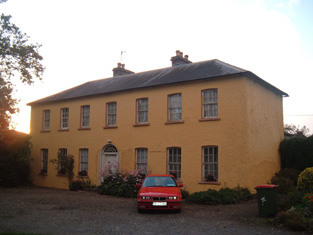
|
| Springfield | The seat of the Norcott family in the 18th and 19th centuries, occupied by Hugh Norcott in 1814 and by James Norcott at the time of Griffith's Valuation when the buildings were valued at £18. The property was held from the Viscount Doneraile at this time. Sold to the Davisons in 1908, it remained in their possession for much of the 20th century. The house is still occupied. |

|
| Park House | A house marked on Taylor and Skinner's map and noted by Wilson as Ballingrane and occupied by Hennessy esq. It became the home of Arthur Norcott, fourth son of Hugh Norcott of Springfield who was married to Frances Roberts of Britfieldstown, county Cork. Local sources suggest it was purchased from the Hennessys by Norcott. It was valued at £30 in the mid 19th century and held from the Reverend Francis Stawell. Sold in the 1890s to Ted Cogan whose descendants were still resident in the early 21st century. |
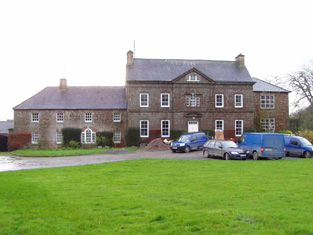
|
| Velvetstown | Seat of the Crofts family for over three centuries, "Velvex-town" was occupied by Thomas Crofts in 1814, by T. Lucas Crofts in 1837 and by Reverend William Crofts in the early 1850s. Reverend William held the house and 708 acres from Penrose Fitzgerald and the buildings were valued at £21. Hajba writes that the original house was replaced by an elaborate Italianate mansion in the late 1870s but when this burnt down in 1895 they moved back into their old home. She also writes that Velvetstown is one of the few North Cork houses still occupied by the family that built it. The Irish Tourist Association survey noted in the 1940s that the walls of the Italianate mansion were still standing though the chimneys had been taken down. |

|
| Doneraile Court | A house of mainly early 18th century origin with 19th century additions located beside the village of Doneraile. Wilson, writing in 1786, describes it as "the magnificent and beautiful mansion, with extensive parks, gardens and demesnes". At the time of Griffith's Valuation the house was valued at £140. In 1942 the Irish Tourist Association Survey stated that the property had been bought by William St. Leger from Sir Walter Welmond and John Spenser, sonf of the poet Edmund Spenser. It was unoccupied in the 1940s and the agent was Mr. Hamilton. The house was sold to the Land Commission in 1969 by the wife of the 7th Viscount. The building was first restored by the Irish Georgian Society and since the early 1990s by various State bodies. It and the 400 acre demesne are now under the care of the Office of Public Works. |

|
| Clifford | This house was occupied by Richard Martin in 1814 and by Thomas Lloyd in 1837 and at the time of Griffith's Valuation, when he held the property from Edward Beatty. The buildings were valued at £26. Clifford passed by marriage to the Mansergh family of Grenane, county Tipperary and at the time of the sale in 1879 was inhabited by Captain C.S. Mansergh, who held it on a lease dated 1868. The representatives of E. Charles Mansergh of Clifford owned 511 acres in county Tipperary in the 1870s. In 1942 the Irish Tourist Association survey reported that it was the residence of the Walton family nd that the estate had been reduced to 40 acres. This house was recently renovated. |

|
| Springfort Hall | A branch of the Foott family were resident at Springfort from the early 18th century. The house was occupied by James Foot in 1814 and by [his grandson] another James Foote in the early 1850s, who held the property from the Earl of Limerick. Hajba writes that Springfort Hall was bought by Charles W. Wyatt in 1854 and sold again four years later to Captain Spencer Stewart, a grandson of the 7th Earl of Galloway. Springfort remained in the possession of the Stewart family until the beginning of the 20th century. It was leased to Commander Hans Thomas Fell White in 1895. It now functions as a country house hotel. |

|
| Elmvale | Elmvale was occupied in 1814 by Henry Lysaght and by 1837 was in the occupation of J. Duggan. Arthur Duggan held the property from the Earl of Limerick in the early 1850s. The house was valued at £20. Hajba writes that in the early 20th century the house was purchased by Sidney Royse Lysaght and following a feud with a neighbour was burnt in 1917. Later rebuilt and still occupied. |

|
| Pencil Hill | This house was built in the 1780s by Harmer Spratt who had married a member of the Foott family. It was known as Monte Video in 1837. The Spratt continued to live in the house untill the early 20th century when it was sold to the Perrott family. The Perrotts changed the name of the house to Beechfield and it was still the home of this family at the beginning of the 21st century. | |
| Clogheen | In his journal William Lysaght refers to building a cottage at Clogheen in 1749. He was leasing Clogheen from Lady Midleton [see De Breffny, page 115]. By 1814 Clogheen was occupied by Arundel Hill who was still resident in 1837. Reverend William F. Crofts was the occupier at the time of Griffith's Valuation. He held the property from William Lysaght. It was valued at £31. In 1870 the house was occupied by Mrs Ellen Crofts. This house no longer exists although the outbuildings still stand. | |
| Hazlewood | ''Burke's Irish Family Records'' suggests that this was originally an Atkins property which came into the possession of the Lysaghts through marriage. Hajba writes that William Lysaght built the house following his marriage in 1819 to Frances Atkins. Colonel Grove White's notes state that it was built before the marriage. In 1837 it was occupied by William Lysaght and in the early 1850s by Carbery B. Egan who held the property from William H. Lysaght. The buildings were valued at £21. This house remained in Lysaght posssession throughout the 20th century having been sold in 1913 by William Lysaght to his first cousin, Sidney Royse Lysaght. In the 1940s the Irish Tourist Association Survey noted that it was famous for its plant nurseries. |

|
| Kilburn/Kilbyrne | The White family resided at Kilburn from the early 18th century to the mid 20th century. The original building was replaced by a new house built in the late 1820s. This building was valued at £35 in the early 1850s. From 1903 to 1938 this house was the home of Colonel James Grove White who compiled the work ''Historical and Topographical Notes on Buttevant, Castletownroche, Doneraile and Mallow.'' The house was partly demolished in the mid 20th century. | |
| Carrig Park | This early 18th century house was the residence of William Causabon in 1744. By the 1770s it was the seat of a branch of the Franks family, who continued to reside there until the beginning of the 20th century. The house was held by William Hume Franks in fee at the time of Griffith's Valuation when the buildings were valued at £45 but the valuation was reduced to £35.10 shillings by 1906. The house was burnt in the early 1920s and later demolished. |

|
| Carrigoon | Occupied by Timothy Collins in the early 1850s and held from Joseph C. Nagle. The buildings were valued at £13. In 1942 the Irish Tourist Association survey noted its association with David Nagle who was MP for Mallow in 1689. The survey mentioned the survival at that time of the stables and coach house. A small ruined portion of this property remains, in an area where extensive quarrying has taken place. | |
| Mount Nagle | An early Nagle home which by the mid 18th century appears to have become the residence of the Linehan family. Hajba records a Mrs Linehan dying there in 1755 and at the time of Griffith's Valuation Myles Linehan occupied the house. He held it from Reverend William Nash and it was valued at £10. This house is still extant and occupied. | |
| Annesgrove | The original house was occupied by Colonel Richard Aldworth in the latter part of the 18th century which Wilson, writing in 1786, refers to it as the seat of Mr. Groves. However, he mentions that near it were "the neat house and beautiful shrubbery of Richard Aldworth". It was reconstructed in the early 19th century (probably post 1814) by Lieutenant General the Honourable Arthur Grove Annesley. Anne-grove, Castletownroche was occupied by William Connor in 1814 and by General Annesley in 1837. The General's residence was valued at £60 in the early 1850s. In 1894 the seat of F.G. Annesley. This house continued to be the residence of the Grove Annesleys in the 20th century. In 1942 the Irish Tourist Authority survey noted that the estate had been divided "in recent years". Annesgrove is surrounded by famous gardens which are open to the public during the summer, see www.annesgrovegardens.com. |

|
| Hunting Hill | Hunting Hill, a single storey house, in the townland of Ballyhimock is marked on the first Ordnance Survey map. Home of the Dwyer family in the first half of the 19th century it was occupied by Mr William Dwyer in 1814 and by Thomas Dwyer at the time of Griffith's Valuation. Located on the Annesley estate it was valued at £15. Various tenants lived at Hunting Hill in the latter half of the 19th century until it was leased to Edward Vaughan, whose descendants continue to live here throughout the 20th century. A house is still extant at the site. | |
| Lisnagoorneen | Hajba writes that Thomas Franks, a nephew of Thomas Franks of Ballymagooly, occupied this house at the end of the 18th century. He married Margaret Maunsell of Ballybrood, county Limerick. They and their son were murdered by Whiteboys in 1823. A new house was built by George Foster Delaney in the 1830s and he was succeeded by his nephew George Johnson who occupied the house at the time of Griffith's Valuation. It was valued at £17 and held from the representatives of G.B. Lowe. The Johnson remained in possession until the early 20th century leasing the house to Major Mansergh among others. In 1942 the Irish Tourist Association survey noted that the Major had owned a famous horse called Lord Cunningham and that Lisnagoorneen house was then occupied by his nephew. |

|
| Glenanore/Glananore | Part of this house appears to date from the early 18th century. It belonged to the Verling family, whose interest eventually became vested in the Johnson family. The Reverend Richard Purcell was the tenant in the latter part of the 18th century and Wilson refers to it as his seat in 1786. It was occupied in 1814 by Garret Nagle and by the early 1830s the Hoares were resident. At the time of Griffith's Valuation Mrs Mary Anne Hoare was the occupier, holding the property from Noble Johnson. The buildings were valued at £32. Mrs Hoare was the widow of Reverend Thomas Hoare who was a brother of Sir Joseph Wallis Hoare, 3rd Baronet. In 1942 the Irish Tourist Association Survey asserted that the front part had been constructed in the early nineteenth century but that other parts were much older. It was then the residence of E.J. Hoare and it was still occupied by members of the Hoare family in the 1950s but is now demolished. |

|
| Clogher | Originally a Nagle home and then in the possession of Harmer Bond through whom Clogher passed to the Lowes. Occupied by Mrs Eliza Lowe in the early 1850s, held from Garret Nagle and valued at £28. This house was derelict at the end of the 20th century. Through the Nagles Clogher had a connection with Edmund Burke, Lewis states that the estate "once belonged to the celebrated Edmund Burke". | |
| Ballynamona | The Nagles originally inhabited the castle at Ballynamona but later built a house adjoining the castle. Garret Nagle was resident in 1814 and Lewis refers to Ballynamona as the ancient family residence "about to be rebuilt". Garret Nagle occupied a house at Ballynamona valued at £9.15 shillings at the time of Griffith's Valuation which he held from John Furlong. The house is still occupied. | |
| Annakisha | The Nangles appear to have held Annakisha from the end of the 17th century and the house may possibly have dated from this time. Pierce Nagle was resident in 1814 and in 1837 and in the early 1850s held the property in fee. The buildings were valued at £22. Sold by Pierce Nagle to the Hamiltons of Castle Hamilton, county Cavan. Hajba writes that the house was derelict by the beginning of the 20th century and it does not appear on later maps. | |
| Johnsgrove | Originally a Glover family home, by the time of Griffith's Valuation it was occupied by Francis F.P. Holmes and held from Walter Nugent. The buildings were valued at £30. This house is still occupied. |

|
| Castlekevin | Originally a Roche stronghold which was granted to William Thornhill a Cromwellian soldier. It remained the seat of the Thornhill family until the mid 19th century. The old castle was incorporated into a castellated mansion in the 1830s. Lewis writes in 1837 that the ‘present extensive castellated mansion was rebuilt by Mr Thornhill after designs by Mr Flood, in the Elizabethan style’. Sold by the Thornhills in the mid 19th century to the Reeves family in whose possession it remained until the 1930s. Still extant and occupied. |

|
| Killuragh | Built by the Thornhills in the late 18th century and soon afterwards leased to the Linehan family. Cornelius Linihan was resident in 1837 and Ellen Linehan in the early 1850s. She held the property from Edward B. Thornhill, the buildings were valued at £20. A lithograph of this house is included in the sale rental of 1851 but there is not much similarity between it and the present building which is now known as The Glen. |

|
| Ballyvonare | A Barry property from the late 18th century passing through the female line to the Harold/Harold-Barry family. The house was valued at £34 at the time of Griffith's Valuation and was held in fee. In the 1940s the Irish Tourist Association Survey outlined details of the family's history in the area and the existence of a soup kitchen there during the Famine. The Harold-Barrys still live at Ballyvonare. |
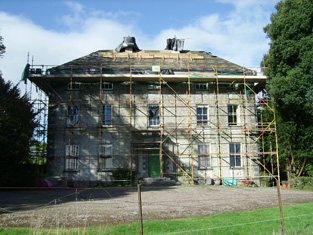
|
| The Hermitage | Hajba states that this single storey house was built by the Reverend John Bagwell Creagh before 1814. Located on the Creagh estate it was occupied by J. Norcott in 1837 and by Samuel Morton Tuckey in the early 1850s, when the buildings were valued at £15.10 shillings. Later inhabitants included William Stawell. Home of the Broderick family in the 20th century. |
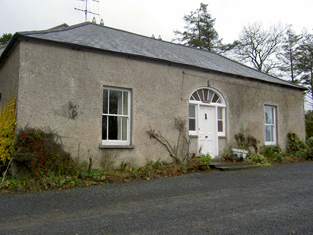
|
| Laurentinum | A mid 18th century house, seat of a junior branch of the Creagh family until the mid 19th century. Wilson refers to Laurentinum as the seat of Mr. Creagh in 1786. At the time of Griffith's Valuation occupied by Stephen Fagan who held it from the representatives of Michael Creagh. The buildings were valued at £32. Later sold to the MacCarthy Morroghs. Home of the Magner family in the 20th century. |
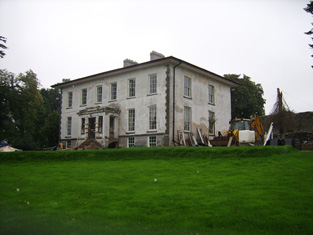
|
| Kilbrack | Hajba writes that this house was built by William Stawell who married Catherine Creagh of Creagh Castle. William was succeeded by his nephew the Reverend Francis Stawell in 1830. Kilbrack remained in Stawell possession until the end of the 19th century. It is still a family home. |

|
| Landscape | This house was held by the Foot family from the Hills by a lease dated 1789 for 3 lives renewable for ever. Occupied by James Hammond in 1837 and in the early 1850s Thomas Bailey was resident holding the property valued at £10.15 shillings from Miss Hill. In the sale rental of 1858 the tenants are given as Margaret and Lucinda Foot. |
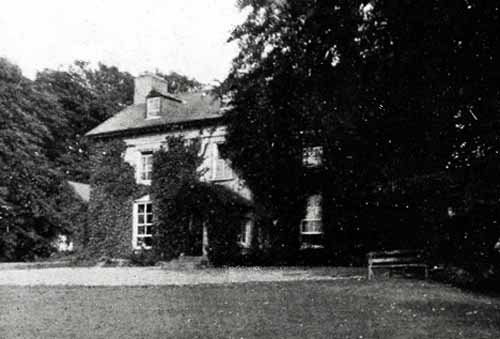
|
| Ballyellis | Ballyellis was occupied by Edmund Barry in 1814 and by Henry Langley at the time of Griffith's Valuation. H. Langley held the property from James Barry and the buildings were valued at £12. It later came into the possession of the Harold Barry family and members of the family were still resident at Ballyellis at the beginning of the 21st century. |
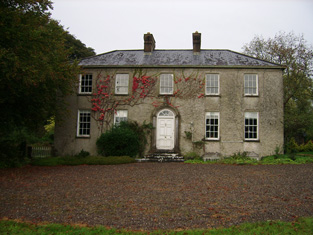
|
| Byblox | Burke's Landed Gentry of Ireland (1904) traces the Ross family of Dunmoyle from the Mann family of Byblox in the first half of the 18th century. Hajba writes that the original house was occupied by the Langley family in the 18th century. At the end of that century Roger Langley leased Byblox to Robert Fennel Crone who built a new house to replace the original which had been accidentally burnt. It was valued at £70 in the mid 19th century. The descendants of Robert F. Crone, including members of the Croker family, inhabited this six bay, three-storied house until the beginning of the 20th century when it was bought by the Morrogh Bernards. In the 1940s the Irish Tourist Association Survey noted that the house was then in the possession of Mrs. Drake Brockman but it was unoccupied with John Roche acting as agent. Byblox was demolished in the 1960s. |
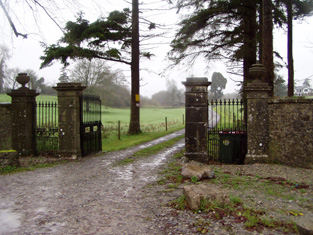
|
| Carker | An early 18th century house built by the Evans family and their main residence for two centuries. It was valued at £40 in the mid 19th century and occupied by John W. Evans in 1906. The roof was removed in the 1950s but the house has been recently restored. For sale in recent years, see www.michaelhdaniels.com. |

|
| Lissa | Originally a Nash home, which passed to Admiral Henry Evans, a younger brother of Nicholas Green Evans, following his marriage to Elizabeth Nash in 1801. Hajba writes that it was occupied by Hugh Norcott in the early 19th century. Captain Croker was resident in 1837 and Charles Croker in the early 1850s. He held the property from the Admiral's son, Nicholas Evans, and it was valued at £32. The home of the Kerr family in the 20th century. For details of the Croker occupation see see http://members.iinet.net.au/~nickred/croker_research/The_Irish_CROKER.pdf page 65. |

|
| Newtown Park | Built by John Evans, younger brother of Ralph Westropp Evans, in 1847. He is recorded as the occupant at the time of Griffith's Valuation, holding the property from his first cousin, Nicholas Evans. The buildings were valued at £15. The house was later extended by Nicholas Evans. Still extant and occupied. |
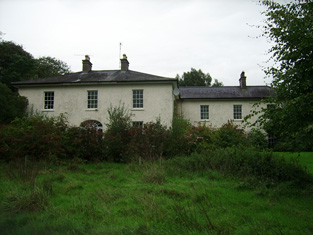
|
| Creagh Castle | Creagh Castle was acquired by Dr John Creagh in the late 18th century and passed to his daughter Mary and her husband, Kilner Brooke Brasier. Their second son, John Brasier-Creagh, inherited Creagh Castle and is credited with building the present house, the original one having been destroyed by a fire. George Washing Brasier Creagh held Castle Creagh in fee at the time of Griffith's Valuation. The buildings were valued at £50. The descendants of John's brother, George Washington Brasier Creagh, continued to live at Creagh Castle until the 1930s. In 1906 the building was valued at £44+ and occupied by Captain John Brazier Creagh. In the 1940s the Irish Tourist Association Survey noted that there was a castle formerly associated with the Coppinger family on this property. |

|
| Crobeg | Home of a branch of the Stawell family throughout the 19th century. The family were involved in the flour milling business at Doneraile. At the time of Griffith's Valuation George Stawell held Crobeg from the representatives of Luke Hassard. The buildings were valued at £36. The house was demolished in the 1980s. |

|
| Cromore | John Creagh leased part of Castlesaffron to Luke Hassard in the late 18th century, who Hajba writes built the house Cromore. Soon afterwards it became the home of the Campion family and Roland Campion was resident at the time of Griffith's Valuation, holding the property from the representives of Luke Hassard. The buildings were valued at £15. Later the home of the Graham family. The building was extensively rebuilt and restored in the 1980s. | |
| Old Court (Doneraile) | Originally a Watkins house, the property was leased to Jonas Stawell in 1813. The Stawells built a new house circa 1814. The Watkins sale rental of June 1853 includes a lithograph of the house and floor plans. In the early 1850s George C. Stawell held the house, valued at £40, from Edmund Nagle. Sold in the early 1850s to the Morroghs of Glanmire House. In the 1940s the Irish Tourist Association Survey noted that this property had also been associated with Alexander Roche, the brother of Lord Fermoy. At the time of the survey the house was occupied by a Miss Creagh and a Miss Shannon. It is now a ruin. |

|
| Saffron Hill Cottage | Hajba writes that this house was built in the first decade of the 18th century by Reverend Edward Sayers, rector of Templeroan. An Edmund Sayers is recorded as the occupant in the early 1850s. He held the property from Viscount Doneraile. The buildings were valued at £22. The Sayers estate at Croghnacree was advertised for sale in November 1859, November 1864 and May 1865. In 1906 Lord Castletown was recorded as the occupier. This house, an eleven bay single storey building, ceased to be a residence in the mid 20th century but has since been restored and is now inhabited again. Reference to the Sayers family in the Moore sale rental of 27 Feb 1863. This house is also associated with the Brasier Creagh family. |

|
| Streamhill | A Crofts residence in the 18th century and in the first half of the 19th century. At the time of Griffith's Valuation it was occupied by George Crofts who held the property from Viscount Doneraile with 1619 acres. The buildings were valued at £12. Hajba writes that Edward Cavanagh Murphy built the present house in the mid 1850s. The 1890s sale notice contains a detailed description. It was sold to Langley Brasier Creagh in 1890 who made some alterations. Uninhabited at the beginning of the 21st century. |

|
| Ballygriffin | Described by Smith in the mid 18th century as "a pretty seat of Mr David Nagle". This house was the birthplace of Nano Nagle. By 1814 Ballygriffin was occupied by William J. Boyce and in the early 1850s by Ellen Linehan who held the property from J.C. Nagle. The buildings were valued at £6. In 1942 the Irish Tourist Association Survey reported that the building was in ruins but it was restored in the late 20th century and is now known as the Nano Nagle Centre, preserving the heritage of the Presentation Nuns worldwide. |
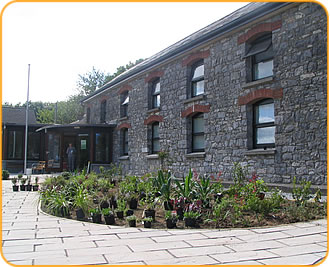
|
| Cottage | James Norcott is recorded as the proprietor of Cottage, Doneraile, in 1814 and J. Norcott MD was resident in 1837. Philip Allen occupied the house in the early 1850s. He held it from Arthur Norcott and the buildings were valued at £20. This house no longers exists. | |
| Donnybrook | Donnybrook was occupied by Charles Smyth in 1814 and by W. Hill in 1837. It belonged to the representatives of Arundel Hill in the early 1850s when the buildings were valueda at £28 and the property was held from William Hill. Bought by the O'Connors at the end of the 19th century. |

|
| Ballyshara | Occupied by Henry Evans in 1814 and by Ralph Evans at the time of Griffith's Valuation. He held the property from Reverend Francis Stawell. The buildings were valued at £18. The home of the Duane family in the 20th century, now a ruin. | |
| Graig | Built by the Hill family, probaby in the last decade of the 18th century, this house was their main home throughout the 19th century. Occupied by James Hill in 1814 and 1837 and by Arundel Hill in the early 1850s. The buildings were valued at £25. By the mid 1870s the head of the Hill family was resident at Mount Southwell. Graig was restored in the 20th century. |
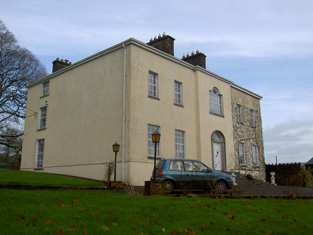
|
| Bowen's Court | Built in the 1770s by Henry Cole Bowen this house was the seat of the Bowen family until 1959 when it was sold by the author Elizabeth Bowen. Wilson, writing in 1786, refers to it as Faraghy, the seat of Mr. Cole Bowen. It was held in fee by Mrs. Eliza Bowen at the time of Griffith's Valuation, when it was valued at £75. In 1942 the Irish Tourist Association Survey noted that the house had been attacked during the 1798 rebellion. Bowen's Court was demolished in 1961. |
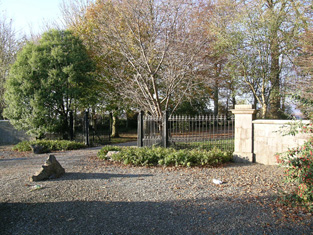
|
| Meadstown | Burke's ''Landed Gentry of Ireland'' (1904) records the Franks family of Maidstown, county Cork. Hajba dates the present house circa 1860 replacing an earlier house. At the time of Griffith's Valuation the Reverend James Golden occupied Meadstown which he held from Henry Franks. The buildings were valued at £10.15 shillings. This house is still occupied. | |
| Woodville | Built as a shooting lodge for the Holmes family, occupied by Richard Sherlock in 1814 and by Captain William Harrington Sherlock at the time of Griffith's Valuation and bought by him in the Encumbered Estates' Court. His daughter married George Washington Brasier Creagh and the house remained in her possession until the 1920s. It is now a Crofts residence. | |
| Ballyhoura Lodge | Ballyhoura Lodge was occupied by Christopher Crofts at the time of Griffith's Valuation. He held the property from the representatives of Robert Holmes and the buildings were valued at £23. The house is still a family home. |
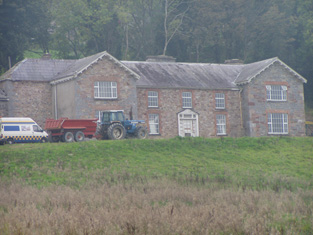
|
| Castle Widenham [Blackwater Castle] | Originally a Roche stronghold, the castle was granted to the Widenhams in the mid 17th century. The castle was altered in both the 18th and 19th centuries. In the early 19th century it passed by marriage to the Brazier Creagh family and again by marriage to the Smyths. At the time of Griffith's Valuation the buildings were valued at £70 and held by Henry M. Smyth from Henry Leader. In 1894 it was the seat of Mrs. Smyth. In 1942 the Irish Tourist Association survey noted that it was still part of the Smyth family estate. Also known as Blackwater Castle, it is still extant. In 2022 it was offered for sale. |
![Photo of Castle Widenham [Blackwater Castle]](https://landedestates.ie/storage/img/orig/1571.jpg)
|
| Springvale | This house was ccupied by Roger Bourke in 1814 and by Roger S. Bourke in 1837. Roger Burke was married to a sister of Garret Nagle of Ballinamona. William Baily was resident in the early 1850s and held the property from the Earl of Kingston. The buildings were valued at £14.10 shillings. Grove White writes that Springvale was purchased by George Grehan of Clonmeen in 1855 and John J. Therry, his agent, lived there. In 1942 the Irish Tourist Association noted it as the residence of Mrs. Helen Clancy, a descendent of Therry. Although abandoned for some years in the 20th century the house has now been restored and is lived in again. |

|
| Ballyviniter | A Stawell residence in the 18th and 19th centuries, occupied by George C. Stawell in the early 1850s, when the buildings were valued at £15. Stawell held the property in fee. The original house is not extant. | |
| Rough Hill | The home of the Harmon family from the late 18th to the late 19th century. At the time of Griffith's Valuation Samuel Harman occupied the house valued at £12 and held from Sampson French. Buildings are still extant at the site. | |
| Carrigacunna Castle | This house was the residence of Henry Baldwin Foote in the 19th century. Lewis writes that the estates of Monanimy, Ballygriffin & Carrigacunna formerly belonged to the ancient family of Nagle and that Carrigacunna was the residence of Sir Richard Nagle, Private Secretary to James II, who forfeited the estate in the late 17th century. In 1837 it was the property of H. B. Foott. He was the occupier in the early 1850s, the buildings were valued at £34 and the property was held in fee. Hajba writes that Henry's son George Carleton Foott lived at Carrigacunna until 1929. The Humphreys family were living here in the mid 20th century. The Irish Tourist Association Survey noted in the 1940s that Major Humphreys was residing in "a handsome modern mansions, adjoining the ruins of the old castle". The house was restored in the late 20th century. |

|
| Carrigoon House | A Stawell home in 1750 and the home of Michael Nash in the latter part of the 18th century. Occupied by James Curtin in 1814 and by William H. Franks at the time of Griffith's Valuation. It was held by Franks in fee and valued at £15. A few ruins remain of this house. | |
| Rockforest Lodge | This house was the residence of Pierse Creagh in 1837. At the time of Griffith's Valuation Henry O. Seavers occupied this house, valued at £24 and held by him in fee. This house is still inhabited. In 2010 it was offered for sale. see http://www.michaelhdaniels.com/index.cfm?fuseaction=propsearch |

|
| Rockforest | The seat of the Cotter family from the mid 18th century and occupied by them until the 20th century. Wilson, writing in 1786, describes it as "a most beautiful improvment, highly wooded, situated on the Blackwater, the seat of James Laurence Cotter". Occupied by Mrs J.R. Cotter, sister-in-law of the 3rd Baronet, in the mid 19th century when the buildings were valued at £18. By 1906 its value had risen to £38.15 shillings. Only half of the house now survives, the Irish Tourist Association Survey of 1942 noting that "the greater part of the building had been knocked down". For sale in 2012 through Savills. |
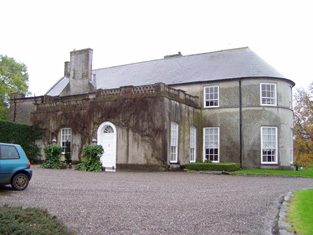
|
| Ballymacmoy | The Hennessys were settled at Ballymacmoy from the mid 18th century. In 1786 Wilson refers to "Ballymacboy" as the seat of Mr. Hennessy. A new house was built circa 1820s. By the time of Griffith's Valuation the Hennessy home was valued at £13.5 shillings and was held in fee by James Hennessy. He also owned a flour mill valued at £70 which he leased to Henry B. Foote. This house was still a Hennessy home in the 20th century and the house is still extant. |
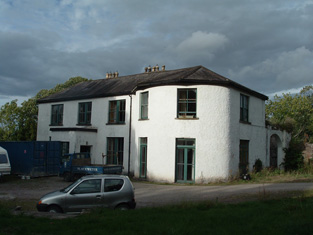
|
| Rockmills Lodge [Rockmills House] | The lodge was the residence of Colonel Richard Aldworth in 1814. Hajba writes that it was built as a shooting and fishing lodge by Colonel Richard Aldworth in 1776 and that he left the property including the mills to his wife's nephew, Charles Deane Oliver (grandson of Robert Oliver of Cloghanodfoy). Occupied by Mrs Sarah Oliver in 1837 and at the time of Griffith's Valuation and held by her from the representatives of Bond Lowe. The buildings were valued at £25 and she was leasing a flour mill and other buildings valued at £170 to P.L. Lyster. This property was advertised for sale in June 1856. The house was burnt in May 1921 during the War of Independence when it was the residence of Charles Deane Oliver. In 1942 the Irish Tourist Association Survey noted that it had been rebuilt by the Walsh family and was then (1942) occupied by the Casey family. It is still extant. The mills are now in ruins. |
![Photo of Rockmills Lodge [Rockmills House]](https://landedestates.ie/storage/img/orig/1591.jpg)
|
| Oldtown House (Fermoy) | William Creagh of Oldtown married Sarah Nagle of Annakissy in the 1770s. The Creaghs were succeeded at Oldtown by the Evans family. Rear Admiral Henry Evans was the occupier in 1837. Oldtown was the residence of Nicholas Evans in the early 1850s. Valued at £29 it was held from Pierce Nagle. Later occupied by the Campion and Roberts families. Oldtown is still extant. |
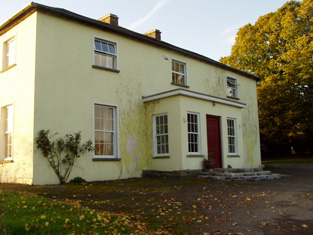
|
| Ballywalter | The seat of the Welstead family valued at £45 in the early 1850s and held in fee. The original house was replaced by an early 19th century building. It was still valued at £45 in 1906 and occupied by S.Q.W. Penrose. It was burnt in May 1921 during the War of Independence and later rebuilt. It is still a family residence. |

|
| Shanballymore | The seat of a branch of the Roberts family, Hodder Roberts was resident in 1814 and Watkins Roberts in 1837. The residence of John Roberts in the early 1850s, held from William W.M. Hodder and valued at £23. The property remained in Roberts possession until 1884 when it was sold to the O'Keeffe family who still reside there. |

|
| Monanimy Castle | In the mid 19th century William Barry occupied Monanimy Castle which was valued at £15.10 shilllings and held from George Bennett. Hajba writes that Barry restored the castle and that he was related to the Nagles who had originally owned the castle. The Barrys remained as residents of the castle until the 1940s when the castle was damaged by a fire. It has been restored and is now a family home. | |
| Dannanstown | A house built beside a large mill by John Furlong circa mid 19th century. At the time of Griffith's Valuation occupied by John Furlong who held it and the large flour mill and offices from Richard Welstead. The buildings were valued at £135. Later owned by Humphrey Smith and Robert Hobson. |
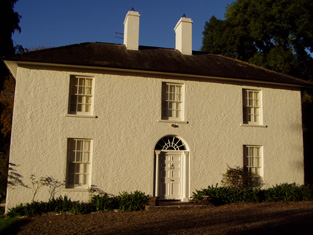
|
| Cahermee | A late 17th century house belonging to the Freeman family, passed by marriage to the Hewson family. A Hewson relative John Milward was resident in 1814. Occupied by John Kearney and held from John Hewson at the time of Griffith's Valuation, when the buildings were valued at £8.5 shillings. Hajba writes that Margaret, daughter of William Hewson Kearney, inherited the house and she married Michael Carroll. This house is no longer occupied. |

|
| Rocksavage | This house was not built at the time of the first edition Ordnance Survey circa 1840. Built for John Craven Mansergh [in the 1850s] on land that formerly belonged to the Martin family. In 1942 the Irish Tourist Association Survey reported that Rocksavage was the residence of Dr. Foley. This house, situated close to the Awbeg River just south of Castletownroche, is still extant. | |
| Wallstown Castle | The castle was originally in the hands of the Wall family. In the late 17th century it passed into the possession of the Ruddocks and then through marriage to the Creaghs and Stawells. In 1836 it was leased to Thomas Baily and was held by Charles Bailey from Thomas Bailey at the time of Griffith's Valuation, valued at £7.18 shillings. The property was purchased by John McCormick of Dublin in 1858. The battlements were added to the building circa 1860. See www.corkpastandpresent.ie. In the 1940s the Irish Tourist Association reported that it had been purchased in the 1920s by a Mr Crowley who "lives in a grand mansion near the ruin of the old castle", |
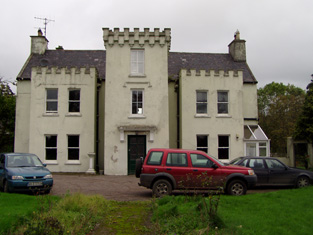
|
| Dromrahan | A mansion house valued at £20 is recorded at Dromrahan in 1906. Matthew H. Franks was the occupier. This house was built in the second half of the 19th century and is not recorded in Griffith's Valuation. A large complex of buildings at the site is labelled Dromrahan House on the 25-inch Ordnance Survey map of the 1890s. It is still extant and occupied. |
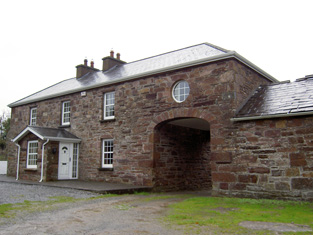
|
| Rockvale (Castletownroche) | At the time of Griffith's Valuation, Leslie O'Callaghan was leasing this property from Eustace estate when it had a valuation of £8. In 1942 the Irish Tourist Association survey noted that the ruins of what had been a Nagle property were still visible to the rear of Rockvale. The Survey also recorded that Leslie O'Callaghan, who "had lived there about 100 years ago" had been killed in Cork and that the property had come into the ownership of the Annesley estate. It was later sold to the Patterson family and the house is still extant. |
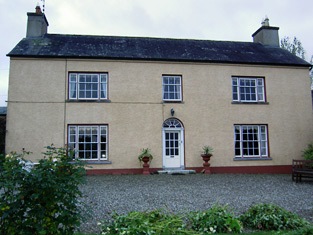
|

